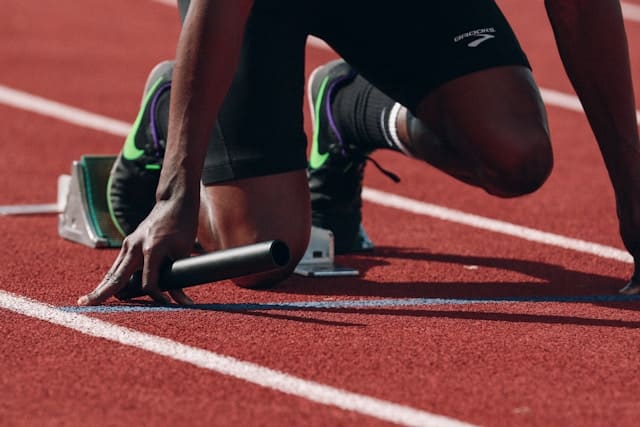In the world of sports and athletics, recovery is the key to optimal performance. Training breaks down the body, causing muscle damage and fatigue, and it’s during the recovery period that your body rebuilds and strengthens itself. But what if there was a way to accelerate this process? Enter cryotherapy, a cold therapy used by athletes around the world to boost their recovery and maximize their performance. In this article, we’ll delve into the mechanisms behind how cryotherapy can aid in an athlete’s recovery and how you can incorporate it into your post-training routine.
Understanding Cryotherapy
Before we jump into how cryotherapy can help with recovery, let’s first clear up what it is. Cryotherapy, derived from the Greek words ‘cryo’ meaning ‘cold’ and ‘therapy’ meaning ‘cure’, is a treatment that involves exposing the body to extremely cold temperatures for a brief period of time.
Avez-vous vu cela : How Can Real-Time Biofeedback Improve Performance in Competitive Rowers?
The therapy usually takes place in a cryotherapy chamber, where the temperature is lowered to between -100°C and -150°C. The cold induces a series of responses in the body, including reducing inflammation, enhancing blood circulation and triggering the release of endorphins – all of which can result in a faster, more efficient recovery.
Cryotherapy is becoming increasingly popular among athletes, with top performers from a range of sports incorporating it into their recovery protocols. But it’s not just for elite athletes; whether you’re a seasoned athlete or a fitness enthusiast, cryotherapy could become a game changer for your recovery routine.
A lire également : What Are the Latest Techniques in Sports Analytics for Optimizing Basketball Team Formations?
Cryotherapy and Muscle Recovery
One of the primary benefits of cryotherapy is its ability to aid in muscle recovery. Intense exercise leads to muscle tissue damage, inflammation, and pain. This post-training muscle damage can impair performance and extend recovery time.
Cryotherapy combats this by using cold temperatures to reduce inflammation and help relieve muscle pain. According to Google Scholar, numerous scientific studies have documented the effectiveness of cryotherapy in reducing muscle inflammation and accelerating recovery post-training.
The rapid cooling of the muscle tissue helps to limit the inflammatory response, reducing swelling and pain. Additionally, the cold temperature aids in slowing down the metabolism of the cells, reducing their need for oxygen and limiting further damage.
Boosting Performance with Cryotherapy
But cryotherapy offers more than just enhanced recovery; it can also contribute to improved athletic performance. Performance is a high priority for every athlete, and any edge that can help in achieving this is worth exploring.
Cold therapies such as cryotherapy can lead to increased blood flow and enhanced oxygenation of the muscles. This increased oxygenation not only benefits muscle recovery but can also contribute to improved performance.
Furthermore, cryotherapy has been shown to increase the production of endorphins, the body’s natural ‘feel good’ hormones. These endorphins work to minimize pain and induce feelings of euphoria, which can have a positive impact on an athlete’s mental state and overall performance.
Incorporating Cryotherapy into Your Recovery Routine
Given the compelling benefits of cryotherapy, you may be wondering how you can incorporate it into your post-training routine. It’s worth noting that while cryotherapy can be beneficial, it isn’t a magic bullet. It should be used in conjunction with other recovery strategies such as adequate sleep, proper nutrition, and hydration.
You can start by introducing cryotherapy sessions after intense training days or competitions. Each session typically lasts between two to three minutes. Remember, the goal is not to endure extreme cold for long periods. It’s about short, regular exposure to stimulate the desired physiological responses.
In terms of frequency, it’s recommended to start with one to two sessions per week and adjust according to your needs. It’s also advisable to seek advice from a medical professional before starting any new recovery protocol.
The Role of Compression in Cryotherapy
Another aspect to consider when leveraging cryotherapy for recovery is the role of compression. Compression can enhance the effects of cryotherapy by helping to facilitate blood flow and reduce inflammation.
While you’re in the cryotherapy chamber, your body’s natural response to the cold is to constrict blood vessels, which can aid in reducing inflammation. Once you leave the chamber and your body starts to warm up again, your blood vessels will dilate, increasing blood flow to the muscles. By wearing compression garments during this time, you can help to enhance this process, further aiding in recovery.
In conclusion, while cryotherapy is not a standalone solution, it can be a powerful tool in an athlete’s recovery arsenal. It’s all about finding the right balance and the right combination of recovery strategies. And with cryotherapy, you might just find that extra edge you’ve been looking for.
Enhancing Recovery with Cryotherapy and Cold Water Immersion
In addition to standard cryotherapy sessions, athletes can utilize cold water immersion or ice baths as another form of cold therapy to enhance recovery. This method has been widely studied, with numerous articles on platforms like Google Scholar and PubMed highlighting its benefits.
Cold water immersion involves submerging the body, or a part of it, in cold water for a specific period, typically between 10 to 20 minutes. Like body cryotherapy, this form of cold therapy also induces several physiological responses that can aid in muscle recovery.
According to a free article from Sports Med, cold water immersion can help reduce muscle soreness and inflammation, enhance blood flow, and promote faster recovery. A separate PubMed article further corroborates these benefits, noting that cold water immersion can be particularly effective for athletes involved in high-intensity sports.
The cold temperature of the water constricts blood vessels, reducing blood flow to the muscles and limiting inflammation. Once the body is out of the cold water, blood vessels dilate, promoting increased blood flow, and speeding up the removal of waste products from the muscles. This cycle can expedite the recovery process and help athletes return to their peak performance more quickly.
However, just like cryotherapy, cold water immersion should be incorporated as part of a holistic recovery routine. It is beneficial when paired with other recovery strategies like proper nutrition, hydration, and sleep. It’s also essential to seek guidance from a medical professional before incorporating cold water immersion into your recovery protocol.
Cryotherapy: A Powerful Tool for Athletes
In the demanding world of sports and athletics, recovery is crucial. Today’s athletes are constantly seeking innovative ways to enhance their recovery and performance. Cryotherapy, along with other forms of cold therapy like cold water immersion and ice baths, offers a scientifically-backed method to expedite muscle recovery, enhance performance, and minimize muscle soreness.
Cryotherapy leverages the body’s physiological response to cold to reduce inflammation, increase blood flow, and stimulate the production of endorphins. The combined result of these effects is a faster recovery post-training and a boost in athletic performance. When paired with other recovery strategies, cryotherapy becomes a potent tool in an athlete’s recovery arsenal.
Moreover, with the increasing availability and accessibility of cryotherapy chambers, this form of treatment is no longer reserved for elite athletes. Whether you’re a seasoned professional or a fitness enthusiast, incorporating cryotherapy into your post-training routine could offer significant benefits.
In conclusion, cryotherapy is an exciting and promising field in sports medicine. Its ability to speed up recovery and enhance performance makes it a valuable asset to any athlete. However, it’s essential to remember that while cryotherapy can be highly beneficial, it isn’t a magic bullet. It should be used in conjunction with other recovery techniques like proper nutrition, hydration, sleep, and potentially, compression and cold water immersion.
Embracing cryotherapy as part of a comprehensive, medically guided recovery protocol can help you recover more quickly, perform better, and ultimately, reach your athletic potential.











